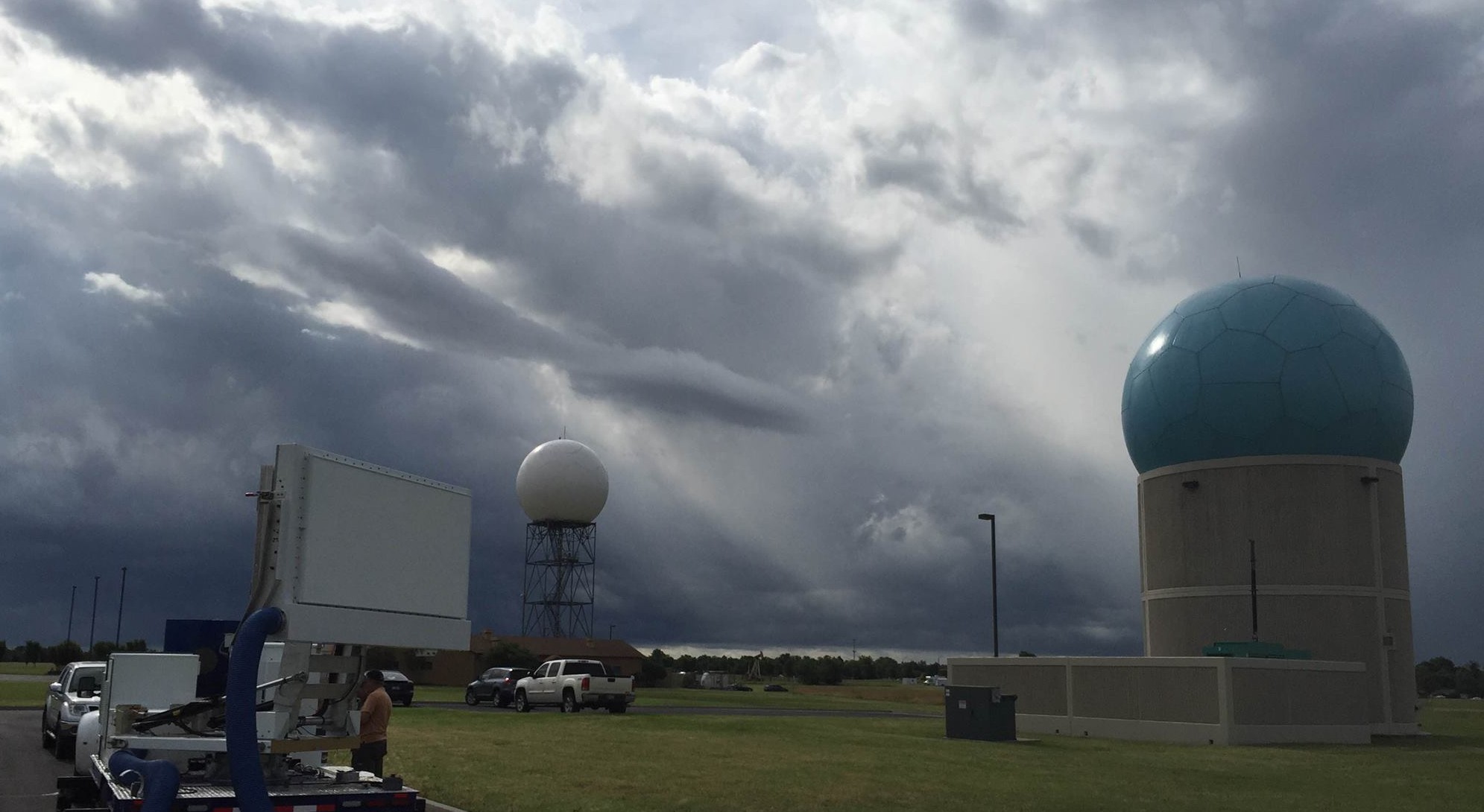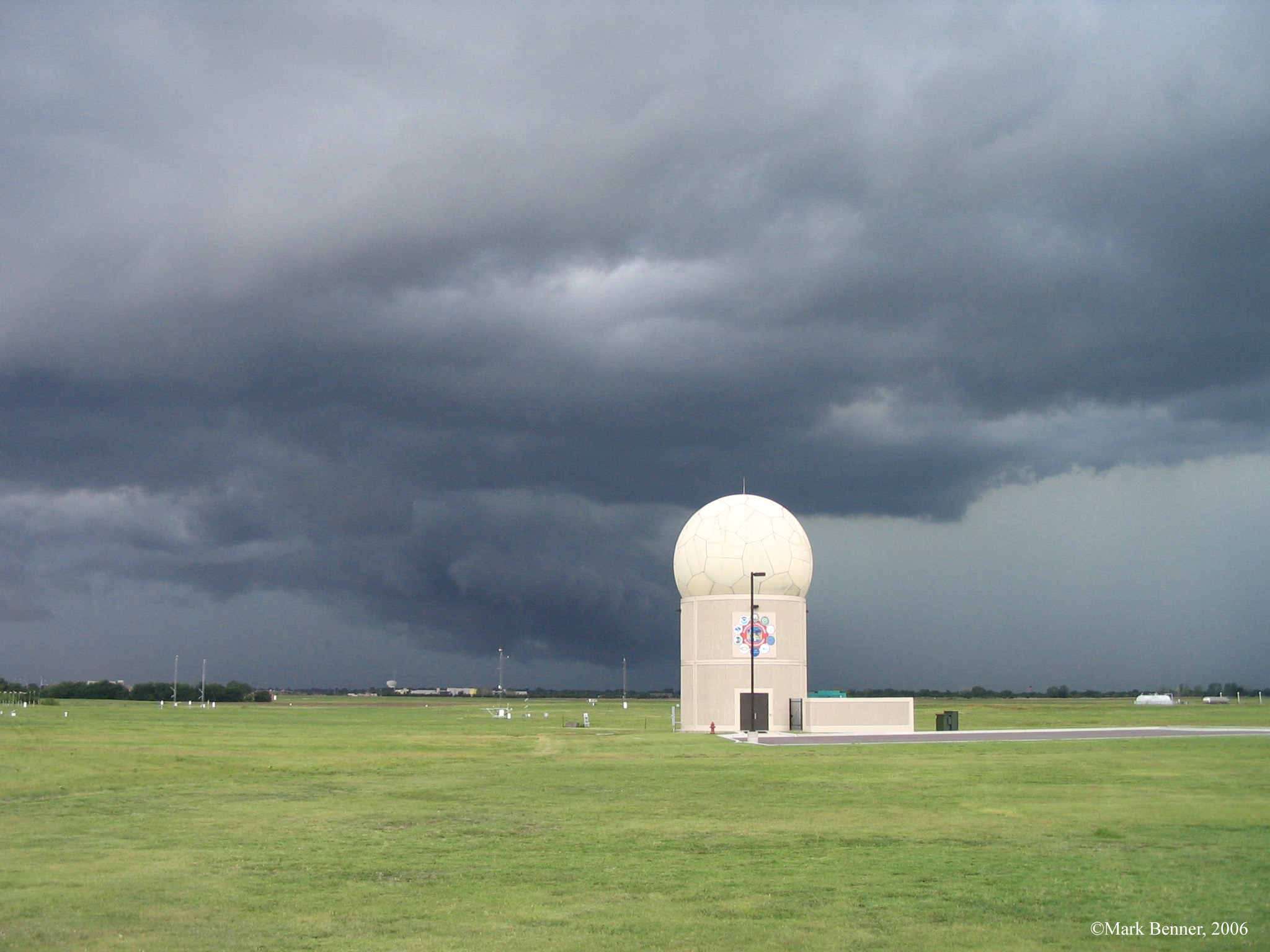 The NOAA National Weather Radar Testbed Multi-function Phased Array Radar will support three experiments with data collection during the spring of 2012 as part of the National Severe Storms Laboratory (NSSL) Phased Array Radar Innovative Sensing Experiment (PARISE).
The NOAA National Weather Radar Testbed Multi-function Phased Array Radar will support three experiments with data collection during the spring of 2012 as part of the National Severe Storms Laboratory (NSSL) Phased Array Radar Innovative Sensing Experiment (PARISE).
The Severe Weather Outbreak Study is a NOAA NSSL program to determine the importance of rapid and adaptive scanning from MPAR in the depiction and understanding of weather events with potential for significant societal impacts. The research field phase is from April 14 – June 15 2012 over the MPAR domain (defined as significant weather sampled within 120 km of MPAR). The main focus of this study to sample rare significant events such as tornado outbreaks.
NSSL will partner with MIT/Lincoln Labs and the FAA on the Multi-function Phased Array Radar’s (MPAR) Wind-Shear Detection Capability Assessment Experiment from April 16 – June 15, 2012. Low-altitude wind shear is a deadly threat to aircraft during landing and takeoff and its accurate and timely detection near airports is critical. Microbursts, in particular, are fairly small and evolve rapidly. There are 45 Terminal Doppler Weather Radars (TDWR) currently serving U.S. airports. MPAR’s have the potential to replace TDWRs at the end of their life cycle, provided they can effectively detect wind shear. Researchers will compare radar data from the Oklahoma City TDWR with data from the NOAA MPAR.
The Deep Convective Clouds and Chemistry (DC3) experiment will explore the role of the thunderstorm updrafts in carrying electrically charged particles, water vapor and other chemicals to the upper parts of our atmosphere. Scientists from more than two dozen organizations will use research aircraft, mobile radars, lightning mapping arrays and other tools to make measurements that will help scientists understand more about the electrical and chemical structure of thunderstorms, including the concentration of ozone. DC3 will focus on Alabama, Colorado and Oklahoma, but when thunderstorms are within 120 km of the Multi-function Phased Array Radar in central Oklahoma, teams will coordinate data collection. The project runs from May 15 – June 30, 2012 with funding from the National Science Foundation (NSF), National Oceanic and Atmospheric Administration (NOAA), and NASA.


